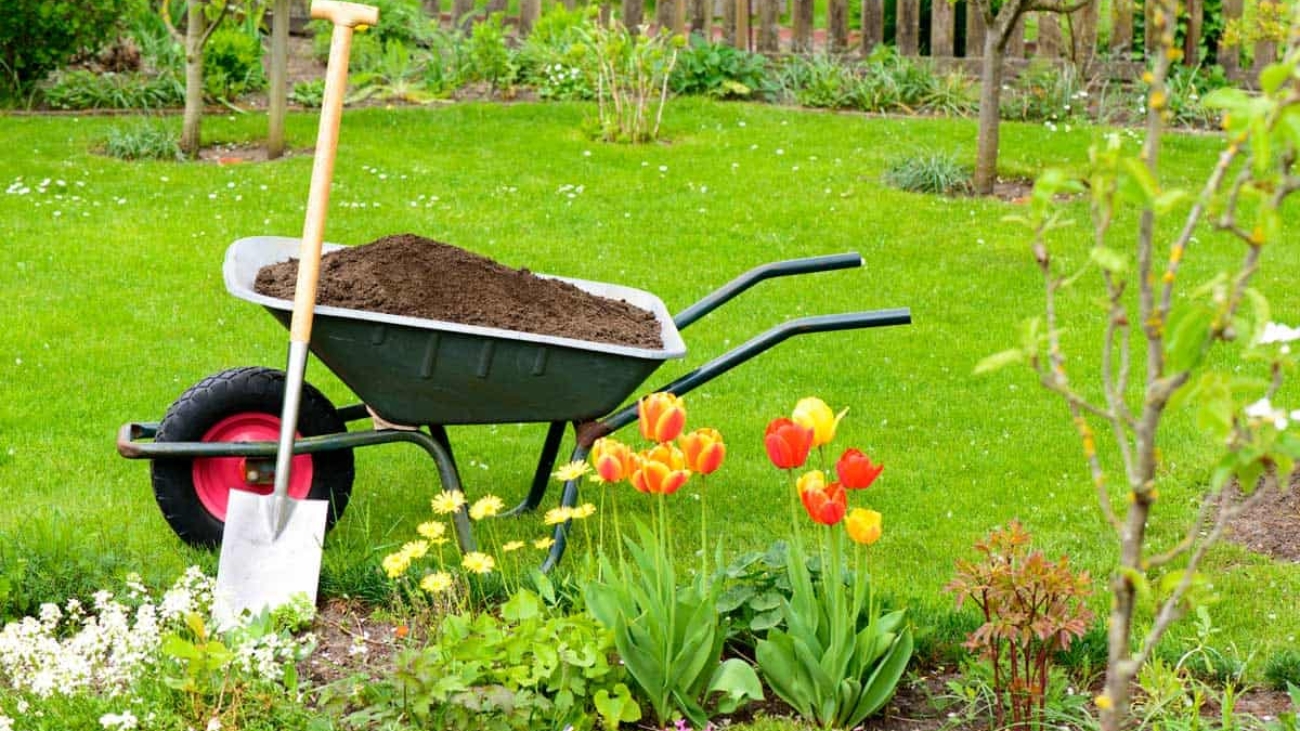Compost is a soil amendment DO NOT PLANT DIRECTLY INTO THIS OR ANY OTHER COMPOST. COMPOST SHOULD BE BLENDED THOROUGHLY WITH SOIL AND/OR OTHER NON-COMPOST AMENDMENTS.
PRICING
Compost ($16.00/cubic yard)
Garden Blend mixes 45 percent compost, 45 percent black dirt, and 10 percent sand to help ensure beautiful gardening results. ($21.00/cubic yard)
50/50 Compost Blend mixes 50 percent compost and 50 percent black dirt to grow vibrant plants, trees, and shrubs. ($18.00/cubic yard)
Topsoil contains highly-concentrated organic matter to ensure the greatest growth results. ($20.00/cubic yard)
Rain Garden Blend is a mix of 70 percent sand soil and 30 percent compost. Used to filter water before it leaves job sites. ($23.00/cubic yard)
DELIVERY OR PICK UP: Delivery is $110 dollars. For soil and compost, the maximum load is 15 yards. For mulch, max load is 25 yards. They will not deliver mixed loads. Pick up with your vehicle in Burnsville. For more information please contact the Mulch Store online or call at 952-946-6999.
http://www.mulchstoremn.com/mulch.html
Mulch. Click here for photos and prices on mulch.
Use the compost calculator to calculate how much compost you need.
Compost CalculatorThis simple calculator will tell you how much compost you need to amend or top-dress your project. Simply (1) enter the length in feet, (2) enter the width in feet, (3) select the depth you’d like, and (5) press Calculate. Your answer will appear under the calculate button.
Soil Amendment:
Compost used as an amendment is typically incorporated into the soil anywhere from 1″ – 6″ deep or more, depending on need. The typical application rate to amend soil is 3 CY / 1000 sq ft at 1″ deep.
Top Dressing:
Compost used as a top dressing is applied to the top of the ground from 1/4″ to a maximum of 3/8″ in depth. The typical application rate for top dressing is 1 CY / 1000 sq ft at 1/4-3/8″ deep.
For Vegetable Gardens and Flower Beds:
Blend compost with the existing soil. Use between 3 cubic yards per 1000 square feet (1” thick) to a maximum of 6 cubic yards per 1000 square feet (2” thick). Roto-till, disc, or manually blend this layer of compost with 6” of the existing soil. It is best to mix soil first, then apply compost, then mix compost and loosened soil again.
For Bedding Plants:
Spread 1/8 to ¼” of compost evenly on top of the soil, mix into the soil, and then water thoroughly.
For House Plants:
Spread 1 tablespoon per 6” pot or about 1/8” of compost evenly over the top of the soil and water. Repeat every six months or when required.
For Sod Preparation:
Blend compost with the existing soil. Use between 3 cubic yards per 1000 square feet (1” thick) to a maximum of 6 cubic yards per 1000 square feet (2” thick). Roto-till soil, disc, or manually blend this layer of compost with 6” of the existing soil. It is best to mix soil first, then apply compost, then mix compost and loosened soil again.
For Seed Bed Preparation:
Blend compost with the existing soil. Use between 1-1/2 cubic yards per 1000 square feet (1/2” thick) to a maximum of 3 cubic yards per 1000 square feet (1” thick). Roto-till, disc, or manually blend this layer of compost with 6” of the existing soil. It is best to mix soil first, then apply compost, then mix compost and loosened soil again.
For Backfilling Trees:
Mix one part of compost with 3 parts of native soil and backfill around the root ball.
Why Is Composting Good?
By Nacy, eHow Contributor
Compost is one of the most beneficial soil amendments, and adding it is one of the easiest ways to improve the health of your garden. The byproduct of organic materials decomposing, compost is an excellent way to recharge the soil.
Multivitamins:
Compost delivers a balanced blend of the nutrients plants need to grow. Unlike fertilizer, which acts quickly and can burn plants, compost is a gentle, slow-release vitamin.
Improved Soil Structure:
Compost adds bulk to sandy soil and helps it retain moisture. It loosens heavy clay soil so it drains better.
Earth Movers:
Beneficial soil organisms, from earthworms to microscopic creatures, live in compost and give it vitality. The worms tunnel through the soil to aerate it and boost its nutrient value with their waste. Soil organisms work like pro-biotics to keep the beneficial bacteria flourishing.
Improved Resistance to Pests and Diseases:
Just like people, plants are better able to fend off diseases if they are healthy. In addition, botanists have found that pests are less likely to attack healthy plants. Since compost-fed plants are stronger, to begin with, if they are infected or attacked they recover faster than plants growing in soil without compost.
Mulch:
When applied in beds, compost makes an excellent mulch. It keeps weeds down and helps the soil retain moisture.
Composting on the Farm:
Farmers have been composting for centuries by plowing their fields under at the end of the growing season. Add some compost to every planting hole you dig. Spread it around established plants. Sprinkle it over newly seeded patches of grass. Grow potted plants in it. Once you start using black gold, you will find more and more uses for it.
Read this: Community Solar

